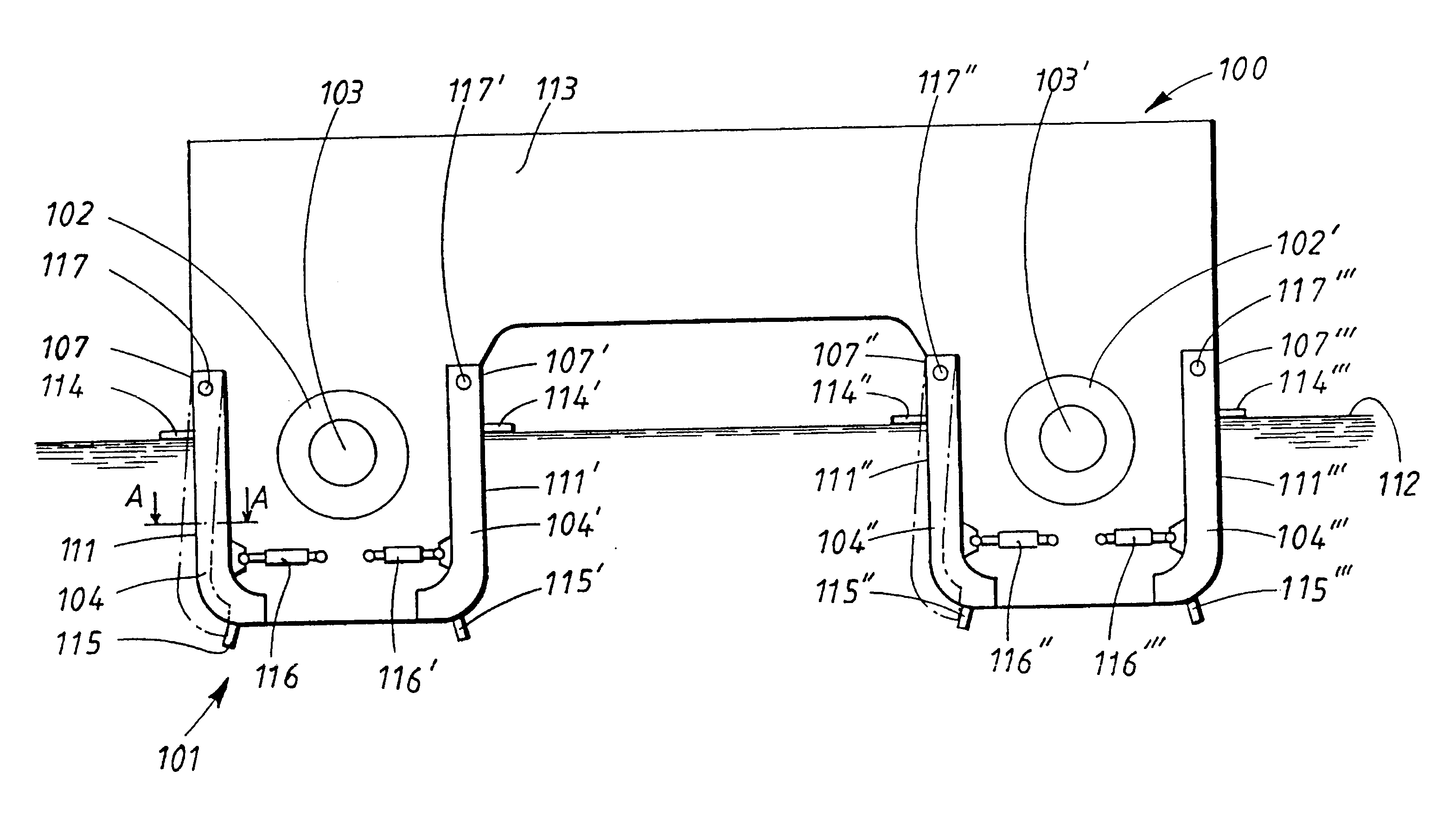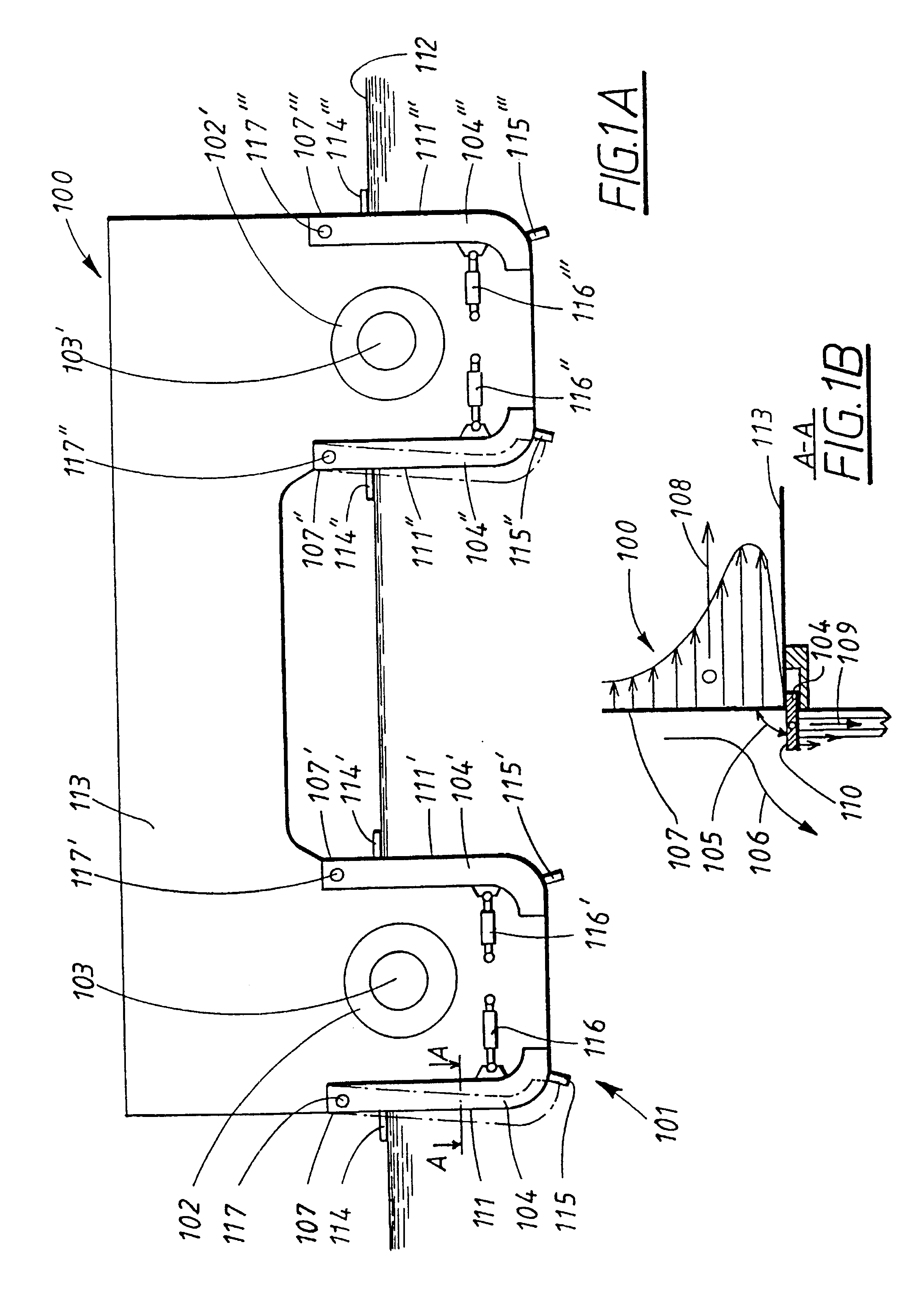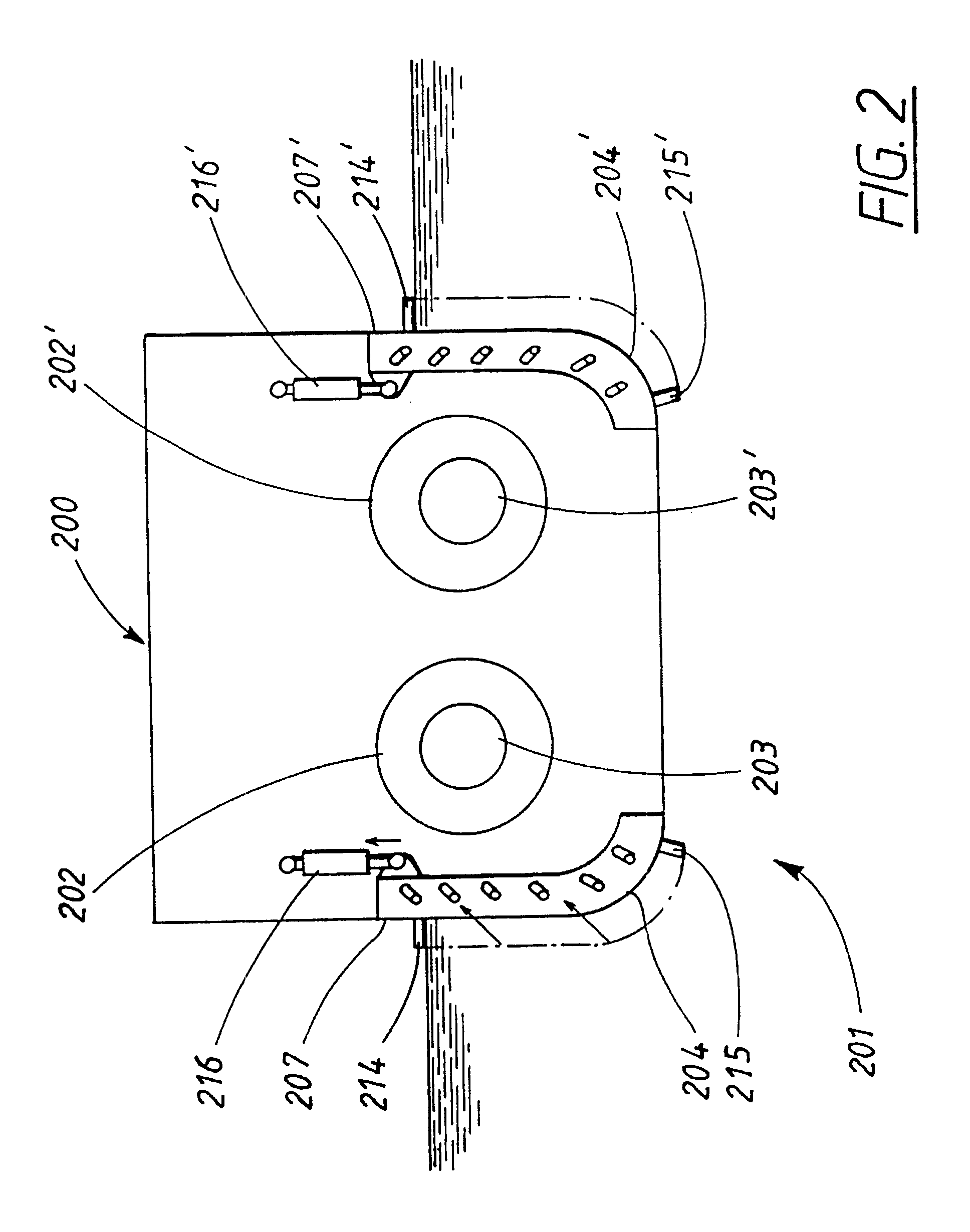Arrangement and method for dynamic control of the movements and course of a high-speed ship hull
a high-speed ship and dynamic control technology, applied in the direction of vessel movement reduction by foils, floating buildings, steering components, etc., can solve the problems of affecting the stability of the course,
- Summary
- Abstract
- Description
- Claims
- Application Information
AI Technical Summary
Benefits of technology
Problems solved by technology
Method used
Image
Examples
second embodiment
FIG. 2 shows a diagrammatic view from the rear of a high-speed vessel hull equipped with an arrangement according to the invention,
third embodiment
FIG. 3A shows a diagrammatic plan view from the rear of another high-speed vessel which is equipped with an arrangement according to the invention,
FIG. 3B shows diagrammatically one rear corner of the vessel shown in FIG. 3A, seen from above along the section A--A in FIG. 3A, and
FIG. 4 shows a simplified basic diagram of an arrangement according to the invention for the purpose of illustrating an embodiment of a method according to the invention.
PREFERRED EMBODIMENTS
first embodiment
FIGS. 1A and 1B show diagrammatically a high-speed vessel with a hull 100 of the catamaran type, an arrangement 101 according to a first preferred embodiment of the invention having been arranged in association with the stern of the vessel. In the first embodiment, the vessel is provided with two propulsion members 102, 102' with course-changing means 103, 103' which consist of two water-jet units with rotatable nozzles and scoop-shaped members for directing the water jets. It is possible, however, to envisage embodiments of the arrangement according to the invention in which no course-changing means 103, 103' are present.
In the first embodiment, the arrangement 101 comprises four flap members 104, 104', 104", 104'" which are all arranged so as to be capable of being brought adjustably at an angle 105 in relation to a water flow 106 relative to an aft side surface 107 of the vessel hull 100.
In the first embodiment, a flap member 104, 104', 104", 104'" is arranged at four different t...
PUM
 Login to View More
Login to View More Abstract
Description
Claims
Application Information
 Login to View More
Login to View More - R&D
- Intellectual Property
- Life Sciences
- Materials
- Tech Scout
- Unparalleled Data Quality
- Higher Quality Content
- 60% Fewer Hallucinations
Browse by: Latest US Patents, China's latest patents, Technical Efficacy Thesaurus, Application Domain, Technology Topic, Popular Technical Reports.
© 2025 PatSnap. All rights reserved.Legal|Privacy policy|Modern Slavery Act Transparency Statement|Sitemap|About US| Contact US: help@patsnap.com



